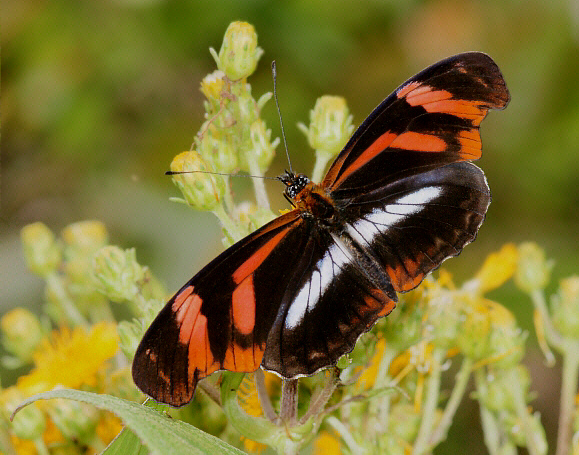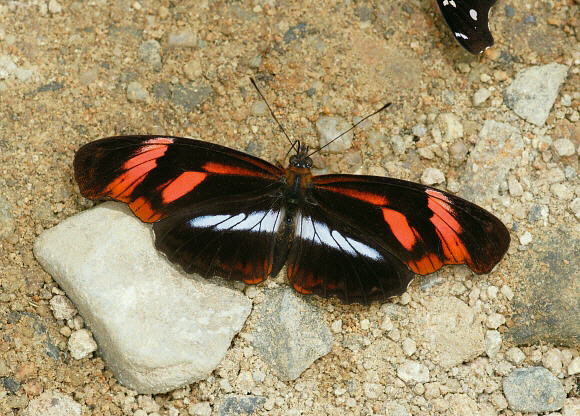 Podotricha telesiphe, Manu cloudforest, 1700m, Madre de Dios, Peru – Adrian Hoskins
Podotricha telesiphe, Manu cloudforest, 1700m, Madre de Dios, Peru – Adrian Hoskins
Introduction
The tribe Heliconiini, colloquially known as Longwings, includes 71 species, all confined exclusively to the neotropics. The Heliconiini includes the genera Heliconius, Podotricha, Dryas, Agraulis, Dione, Dryadula, Eueides, Neruda, Laparus and Philaethria. There are 2 members of the genus Podotricha, both characterised by their angular wings which are quite unlike those of other Heliconiines.Note : Heliconius telesiphe, which occurs in the same areas as Podotricha telesiphe, is a different insect, in which the median pink bar runs parallel to the outer pink bar, meeting the costa instead of diverting to the base of the wings. It also has a different wing shape, being rounded at the forewing apex, and unscalloped on the hindwings.Podotricha telesiphe is an uncommon but widespread species occuring from Colombia to Bolivia.
Habitats
Podotricha telesiphe occurs at elevations between about 1500-2600m in the eastern Andes.
 Podotricha telesiphe, Manu cloudforest, 1800m, Madre de Dios, Peru – Adrian Hoskins
Podotricha telesiphe, Manu cloudforest, 1800m, Madre de Dios, Peru – Adrian Hoskins
Lifecycle
To be completed.
Adult behaviour
Heliconiine butterflies, including Podotricha, are characterised by having a delicate fluttering flight, particularly when hovering around flowers. Both sexes visit Lantana, Eupatorium and Senecia for nectar and typically spend 2 or 3 minutes visiting several flower heads on a particular plant before moving off in search of another.
